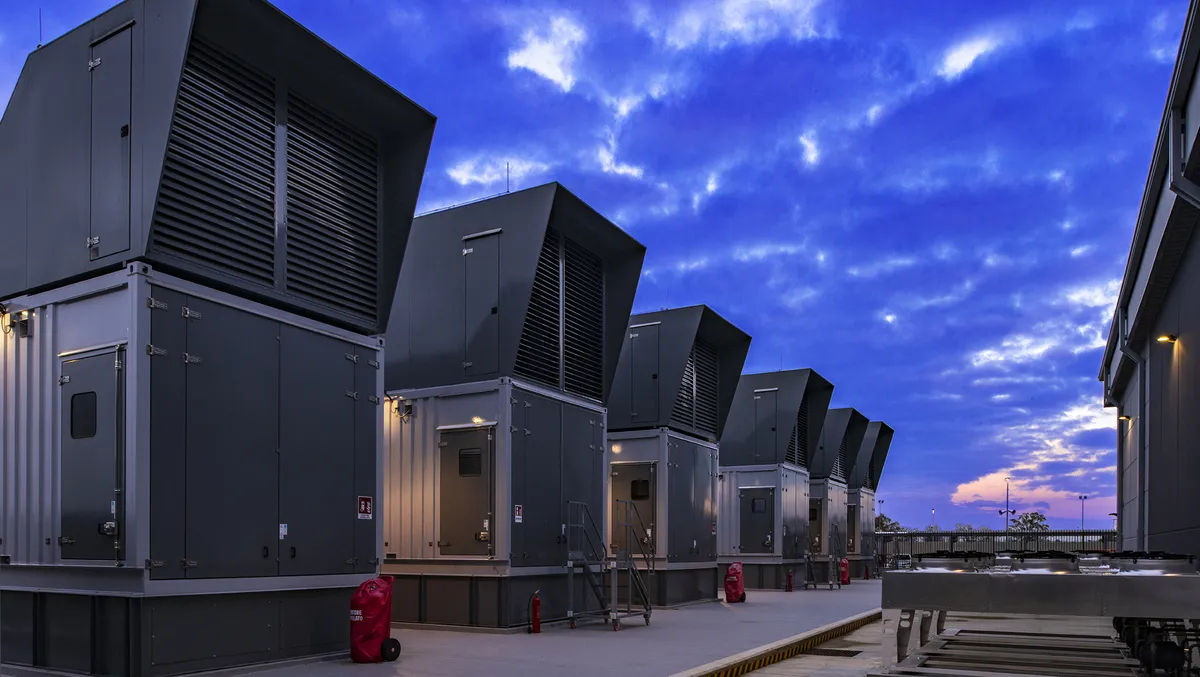
The metaverse may be virtual, but it lives in data centers
The metaverse is stimulating debate and dividing opinions across the tech sector and beyond. What it is, or could be, is hotly contested: a completely virtual world we inhabit as avatars or a more functional alignment of computer-generated and physical elements?
Many are quick to question the metaverse and ask whether anyone will use it. Well, transport yourself back to the times of analogue mobile phones; would you have been able to comprehend the almost universal adoption and huge capability of smartphones? Today's niche application quickly becomes tomorrow's everyday essential.
Whatever the metaverse ends up becoming, it is clear we are on the verge of a transformation that will change the internet as we know it to make it more immersive and ubiquitous. Executed well, these changes will create significant value by facilitating the digitalisation of more and more elements of our lives. This, in turn, will increase accessibility, reduce inequalities, and allow for more sustainable ways of living and working.
Where the metaverse lives
But, of course, the metaverse is a concept, not a place. As we interact with virtual environments and with each other, we generate vast amounts of data as text, audio, and video. This must be captured, processed, and stored in real-time to ensure a seamless experience for users. The metaverse also requires high-speed connectivity so that people worldwide can connect and interact with each other in real-time. All this requires high-performance, ultra-reliable and secure physical infrastructure. The physical places where the metaverse exists are data centers.
As the metaverse expands, so will the need for powerful and reliable data centers to support the vast amounts of computing power and storage it demands. We have already experienced enormous growth in computing power and data storage demand and need to match it with efficient and climate-neutral facilities. We are on the right track; data collated by the International Energy Agency (iea.org) shows that internet traffic grew 17-fold between 2010 and 2020, and the workload processed by data centers nearly tenfold in that period, but energy consumption by data centers over the same time has barely increased.
Meeting demand while minimising impact
Immersive technologies and metaverse applications will supercharge these trends and drive demand for data centers. As leaders in designing, building, and operating these essential building blocks of the digital world, we must meet this exploding demand in ways that minimise the impact on the real world around us.
Data center operators have made significant strides towards improving efficiency at modern facilities around the globe. Many operators, including STACK, have and will continue to invest heavily in advanced technologies that aim to significantly reduce the energy and water resources required to fuel commuting power and cool data center servers. At STACK, we leverage rainwater harvesting, and blue and grey water recycling, to minimise our need to draw from local, potable water supplies. Additionally, we've pioneered the reuse of the waste heat produced by feeding into neighbouring domestic and industrial district heating systems. Finally, we source 100% of our electricity needs from renewable energy resources. STACK's commitment, alongside many of our European peers, to the Climate Neutral Data Centre Pact, emphasises our industry's shared desire to work towards becoming carbon neutral by 2030.
Local and global environments matter
It is also imperative that we work closely with local communities, government, and power utilities to ensure that while we provide these essential digital services, we are also contributing to local economies. Data centers offer high-skill jobs that represent new and exciting careers for people from all walks of life. We are working closely with the next generation of talent by visiting schools and universities near existing and future sites to introduce the world of data centers and the wide range of roles available. Educational collaborations and apprenticeships go further to explain the direct link between current and emerging digital services and the vital role that data centers play in delivering them.
Integrated planning
As we look to a more digitally intensive future, integrated planning that ensures that data centers are not only key building blocks for the digital economy but also the foundations of robust and sustainable local economies is fundamental. This includes working with power generation and distribution companies.
For example, in Switzerland, STACK is contributing to the Confederation's Winter Reserve, by which we provide part of our emergency backup generation capacity to the Swiss national grid that helps avoid winter blackouts caused by peak electricity demand. A similar program in the Nordics utilises our uninterruptable power supplies (UPS) to balance voltage across the entire Scandinavian grid, helping protect against surges that can lead to power outages.
Initiatives like these, in addition to thoughtful site selection decisions that enable waste heat recycling programs serving local district heating systems, demonstrate how data center development can go hand-in-hand with the enhancement of the local environment without negatively impacting communities.
The metaverse can potentially deliver significant innovation and could open up almost limitless new opportunities for people worldwide. Data centers are essential for the development and operation of the metaverse, and as it continues to evolve and grow, demand will increase. However, we are already working hard to ensure that demand is met in ways that tread lightly on the natural environment and are overwhelmingly positive for local communities around our sites.
As we build these physical foundations of the cloud, and of the metaverse, we are always aiming for win-win scenarios. Opportunities in the digital and physical worlds can be delivered in tandem, and we are committed to making this happen in every community we operate.

